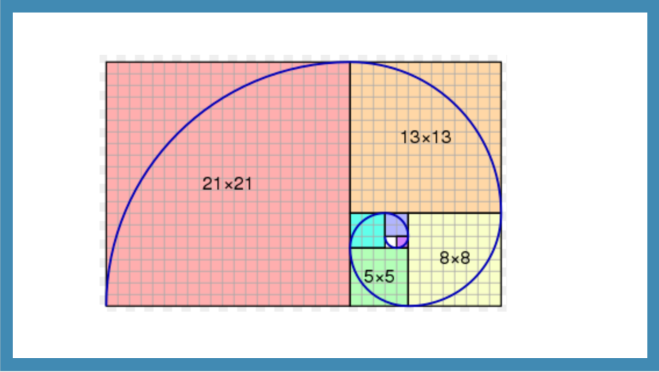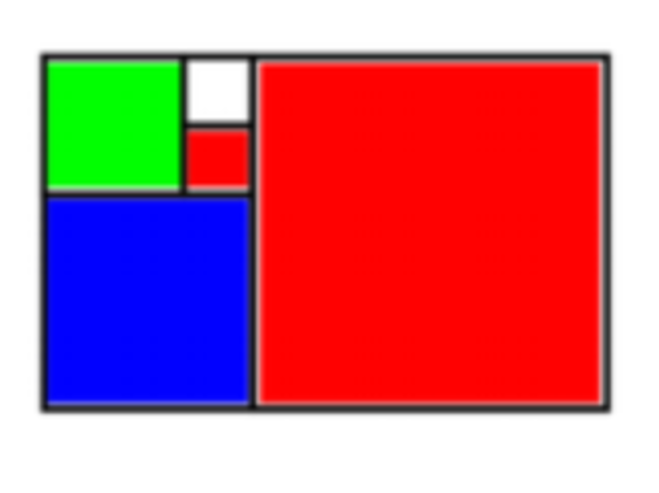This is a shortened version of the talks I gave at ResearchED Durrington and ResearchED Rugby
When we are taught something, the information our teacher is sharing passes first into our working memory. The working memory is the place where we think. What many teachers do not realise is that the capacity of the working memory is fixed and limited; as a result, it can only think about a very small number of things at a time. Once the working memory is full, it can only take on more information by ‘dropping’ something, in the same way that you might be able to juggle with two balls easily enough, but add a third into the mix and everything would go pear shaped. The technical term in cognitive science for ‘going pear shaped’ is cognitive overload.
Fortunately, there is a work-around. Unlike the teeny-tiny working memory, the long-term memory is vast. I like to think of it a bit like the Room of Requirement in Harry Potter. The long term memory is the place where things go when we have thought hard about them. The great thing about this is, once something makes it to the long-term memory, we can bring that memory back into the working memory when we want to think about something. We can remember things. With things we have thought about over and over again, retrieval of memories can become completely effortless and automatic. For example, you can read these words with minimal effort because reading for you has become automatic. This means you have cognitive capacity to spare in your working memory to think about what these words are actually saying. You don’t have to use any of you capacity trying to work out what the words say.
This cognitive architecture has implications for teachers. We will need to consider the cognitive load involved in what we are teaching and be keenly aware of the limited nature of working memory. This means we will need to present information in really small steps. Another implication is that we will need to make sure that students have to think hard about what we want them to remember (rather than thinking hard about something else, like the format of the lesson). A third implication is that because we want students to remember what we taught them, we will need to give them lots and lots of opportunities to retrieve what we have taught them from their long-term memories, as this will make the memories stronger.
Some things we learn form the building blocks of much of our later thinking so secure recall of these is vital. They must be practised over and over until they are so automatic, it is impossible to forget them. We need these tools to be available to us in our working memory whenever we want them, without any conscious effort. We don’t want to have to remember how to read before we can read anything or have to resort to counting on our fingers in the middle of our maths GCSE. (For more about how we remember things, see here.)
However, we don’t always bear these implications in mind. For example, we don’t break things down into small enough steps because we are experts in the things were are teaching. Things seem easy to use, precisely because various steps in the learning process have become so automated and unconscious, we don’t even recognise all the different things we are doing at once. Wiemann called this ‘the curse of knowledge’[1].
I’m going to explore this using a case study approach. I’m going to explore how we learn to tell the time. However, since I am assuming that you probably can already tell the time using a conventional, analogue clock, I am going to teach you using a kind of clock I’m pretty sure most people who read this won’t be familiar with. Please let me introduce the Fibonacci clock.

The Fibonacci clock uses the Fibonacci sequence, rather than the more conventional numbers 1-12. To work out the Fibonacci sequence, start with 0 and 1, and add them together. Obviously this is equal to 1, which now forms the third number in our sequence of 0,1,1. To get the next number, add the last number in the sequence to number to the one before it. So the next number will be 2. The number after that will be 3, then 5 and so on. If you really want to get into the spirit of things, you might wish to pause and work out the next few numbers in the sequence for yourself. For ease of reference, I’ve put them here.[2]
However, for the purposes of our clock, we only need to first 5 of these (the first 5 after zero that is, so 1,1,2,3,5). Another property of Fibonacci numbers is that if you draw squares whose sides equal the numbers in the Fibonacci sequence, you can arrange these squares into an ever expanding spiral, known as the golden spiral or the Fibonacci spiral.

For our purposes, we only want to look at the rectangle formed when 1,1,2,3,5 are placed together in this spiral formation. This rectangle will form our clock face.


The panels on the face light up different colours and the pattern of colours is what tells us the time. (They are only accurate to 5 minutes.) These are the rules for telling the time on a Fibonacci clock
- The hours are displayed using red and the minutes using green.
- To work out the minutes just add up the green squares and multiply by 5
That seems simple enough, so let’s have a go (answers at the end as footnotes)
a)[3]

b)[4]

That’s not so bad. The hours are quite straightforward. The minutes are a little but more clunk to work out – worth remembering when we expect children to grasp that with the minute hand you also have to count in 5’s.
However, it isn’t quite as straightforward as that. Here is the full set of rules.
- The hours are displayed using red and the minutes using green.
- When a square is used to display both the hours and minutes it turns blue.
- So to work out the hours just add up the red and blue squares.
- To work out the minutes just add up the green and blue squares and multiply by 5
Ok, let’s try telling the time now
c)[5]

d)[6]

e)[7]

There’s more than one way to display the same time on a Fibonacci clock.
f)[8]
 I’m hoping that you are finding this a bit taxing. There’s a lot to think about and you are a good way off being able to ‘read’ the time in the same way you can read your watch without thinking.
I’m hoping that you are finding this a bit taxing. There’s a lot to think about and you are a good way off being able to ‘read’ the time in the same way you can read your watch without thinking.
Now let’s contrast the rules for telling the time on a Fibonacci clock with those for telling the time on an analogue clock.

There are actually more complicated rules for the analogue clock. Yet we expect children to pick this up with a couple of three week block in year 2 and year 4, and then wonder why so many of them can’t tell the time! Because there are 4 different rules that all need orchestrating simultaneously, the cognitive load is too high for many children, so learning fails. The ones that get it probably had already had a fair bit of practice at home, so some of the rules were already automated and didn’t need to be consciously worked through. This meant these pupils had more space left in their working memories to think about those rules that were new to them. So, extrapolating from telling the time, we should consider that whenever children struggle with something, it is worth asking ourselves if we have overwhelmed their working memory by underestimating how complex something is? More often than not, the answer will be yes.
If we really did teach the time using a Fibonacci clock, what would be an effective way to do it? We’d break it down into small steps, one rule at a time, practising that lots and lots, before introducing the next rule. So we would start off just telling the time in hours, using red only. if we did this lots and lots, the children would start to benefit from what is known as the ‘chunking effect.’ If we gave children plenty of time to practise each component aspect separately, this step would become stored in the long term memory as a ‘chunk’.
Have you ever tried to carry a large bundle of washing upstairs. First of all, you drop a sock. When you pick this up you then drop some pants. Precariously balancing your pants on top of the pile causes yet more socks to cascade to the floor. Then consider the same load, packed into 5 carrier bags. You easily manage to climb the stairs without depositing underwear on the landing or hosiery in the corridor. A similar thing happens in our brains with chunking. The classic illustration of this effect is to ask someone to try and remember a sequence of letters or numbers. For example, look at this sequence for a few seconds (or even better, have somebody else read you this sequence) then look away and try to recall it.
TCV QBM TBI NTS
Now try this sequence which has exactly the same letters
BBC ITV NQT SMT
British readers should find this much, much easier as the groups now form instantly recognisable chunks (for non-Brits, BBC is obviously the more usual name of the British Broadcasting Company TV channel, ITV is another TV channel, NQT stands for ‘newly qualified teacher’ and SMT stands for ‘senior management team’ – the leadership team in a school.)
Each of these ‘chunks’ of meaning only take up one slot in the working memory, so in the second example we only have to remember 4 things, not 12. We use chunking when we read a clock face. When we read a watch, we don’t count round in 5’s, we automatically ‘read’ the time from the position of the hands. We can even do it when the numbers are missing!

In the same way we no longer consciously sound out every letter when we read but can just ‘see’ what a word says, given sufficient practice, children will be able to just’ read’ a clock or watch. So now let’s practise reading our Fibonacci clock sticking just to red for the moment. You may find you begin to just recognise certain patterns if you do this a few times.
a)[9]

b)[10]

c)[11]

d)[12]

e)[13]

f)[14]

g)[15]

h)[16]

i)[17]
j)[18]

k)[19]

l)[20]

m)[21]

n)[22]

o)[23]

p)[24]

q)[25]

r)[26]

s)[27]

When we were able to just read all these red clock faces automatically, we could move on to reading hours using a mixture of red and blue. When that was completely fluent we would concentrate on minutes, first of all just using green and when that was very secure, green and blue minutes. Eventually we would be in a position to put it all together. This would take a lot of time and a lot of short but frequent practice.
If we translate this into how we teach children to tell the time using an analogue clock, it is little wonder children find it so hard and teachers so frustrating to teach. We don’t break it down enough and don’t do nearly enough practice once we’ve finished teaching the unit on time. In fact, it’s a miracle anyone learns to tell the time at all! If you want to find out about a better way of teaching time, I suggest you look at my blog here, where I advocate teaching using the hour hand only at first, and then subsequently teaching the minute hand separately. When both of these can be read fluently, read two clocks side by side, one showing hours, the other minutes. Finally, after all this practice, you can introduce a standard two hand clock.
As I said earlier, there are some things we learn as in the early years and key stage one that form the building blocks of much of our later thinking. If we want children to have the mental capacity to be independent, critical thinkers, we need to move heaven and earth to make sure as many as possible of these crucial building blocks become completely automatic so that precious working memory space can be used for more creative thinking. These key skills must be practised over and over until they are so automatic we cannot forget them and don’t need to think about them. Drivers may well remember how difficult it was when first learning to drive to change gear, steer, signal and read the traffic all at the same time. A year or so later, the process is so automatic, you can arrive at home without even remembering much of your journey. Instead, you’ve been able to think about other, more important things on the way home.
In the same way, our children have an entitlement to be given time and encouragement to commit the basic building blocks of thinking into their long term memories. Primary schools owe it to the children they teach to make sure that as a bare minimum, all of these are learnt to automaticity.
- Number bonds
- Times tables
- Phonics
- Handwriting
- Telling the time
- Full stops and capital letters.
- Weeks and months
- Recognising map of UK and beyond
Yet there is a reluctance to spend time practising basic skills. It is derided as ‘meaningless rote learning.’ Nothing could be farther from the truth. What is really meaningless is condemning children to a lifetime of having to count on their fingers when we could have set them free from the bondage to counting by making such they knew their number bonds to automaticity. What could hinder problem solving more than not being able to manipulate numbers effortlessly because you were never given the opportunity to learn your tables by heart, because your teacher described that sort of thing as ‘regurgitation’? What could be less creative than not being able to read fluently because your teaching thought phonics was boring? It is our duty as educators to ensure that we help children move as much information as possible to long-term memory, so that their cognitive load can be utilised on the fun stuff, the clever stuff, the important stuff.
[1] Wiemann, C. (2007) ‘the curse of knowledge’. Or why intuition about teaching often fails’. APS News 16 p.9
[2] 0,1,1,2,3,5,8,13,21,34,55,89…
[3] 7 o’clock
[4] 6:30
[5] 5:45
[6] 6:30
[7] 6:30
[8] 9:25
[9] 1 o’clock
[10] 2 o’clock
[11] 2 o’clock (those annoying duplicates!)
[12] 3 o’clock
[13] 4 o’clock
[14] 5 o’clock
[15] 5 o’clock
[16] 6 o’clock
[17] 6 o’clock
[18] 7 o’clock
[19] 7 o’clock
[20] 8 o’clock
[21] 9 o’clock
[22] 9 o’clock
[23] 10 o’clock
[24] 10 o’clock
[25] 11 o’clock
[26] 12 o’clock
[27] This is also 12 o’clock. I forgot to tell you that rule, in the same way we forget to tell children that 12 is also zero on an analogue clock
Hi there, I would love to chat to you about this for an article on rote learning for TheSchoolRun.com. Would you be kind enough to email lucy.dimbylow@virginmedia.com so I can give you some more info? Many thanks.
LikeLike
[…] I saw Clare give a talk at ResearchEd Durrington where she explored this in detail. The power of gaining fluency through repeated practice, leading to automaticity, is such an important idea and she communicates it superbly: https://primarytimery.com/2018/06/10/cognitive-load-a-case-study/ […]
LikeLike
[…] Working memory, retrieval, recall, long term memory, working memory, cognitive load. These are all huge buzz words in education at the moment (or perhaps just in the bubble of education we occupy on Twitter), and so they should be. They’re nothing complicated (on the surface) admittedly. Teach kids in little steps, don’t teach too much at once and make sure you revisit things regularly. There are much better sources than me to scrub up on it through. Daniel Willingham’s ‘Why Don’t Students Like School?’ is the ultimate go to source, and for more succinct whilst equally brilliant breakdowns, you can’t beat Clare Sealy’s work on it at https://primarytimery.com/ (particularly – https://primarytimery.com/2018/06/10/cognitive-load-a-case-study/) […]
LikeLiked by 1 person
[…] Cognitive load: a case study […]
LikeLike
[…] C (2018) Cognitive load: a case study. Available at: https://primarytimery.com/2018/06/10/cognitive-load-a-case-study/ (accessed 15 October […]
LikeLike